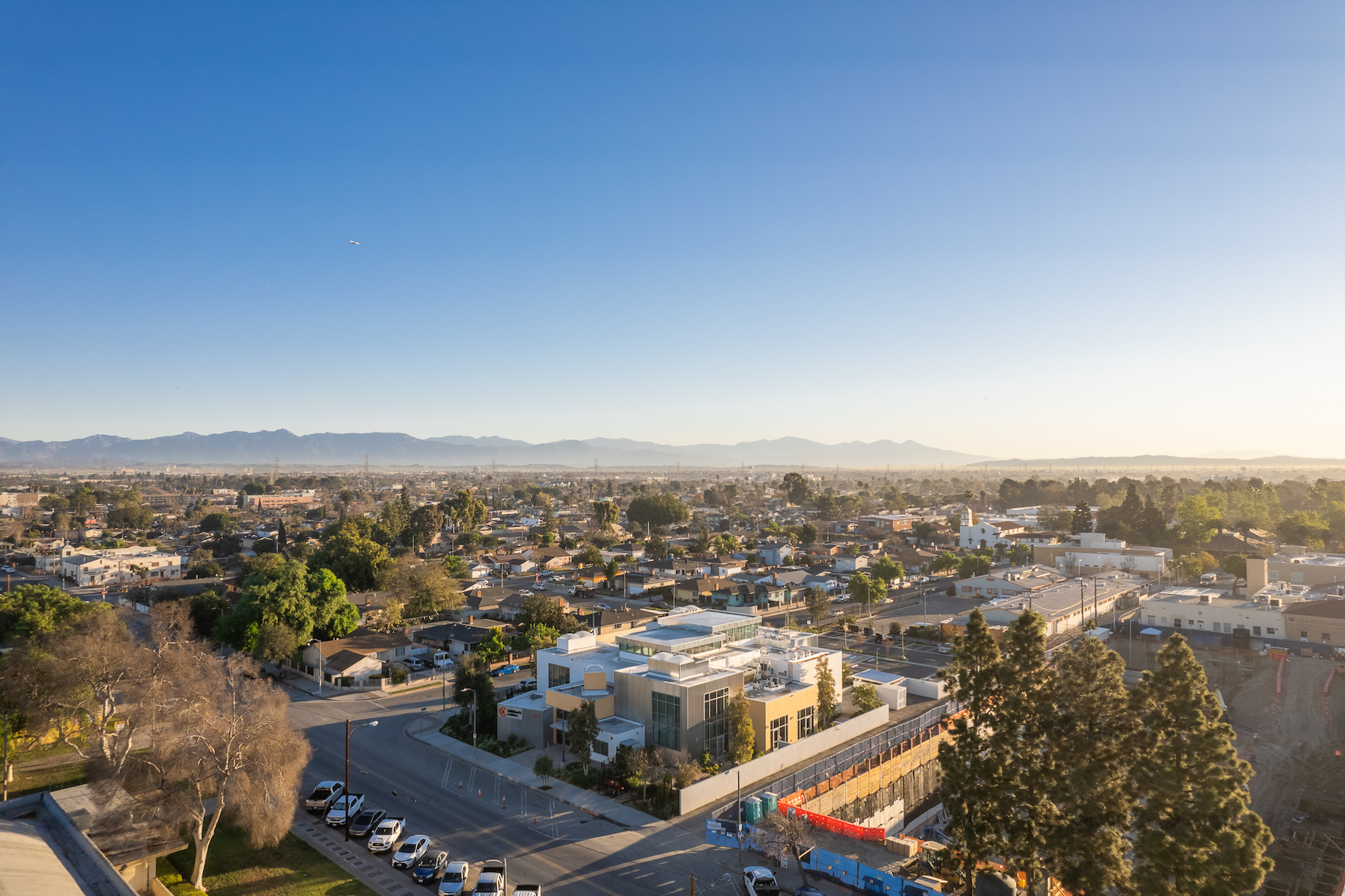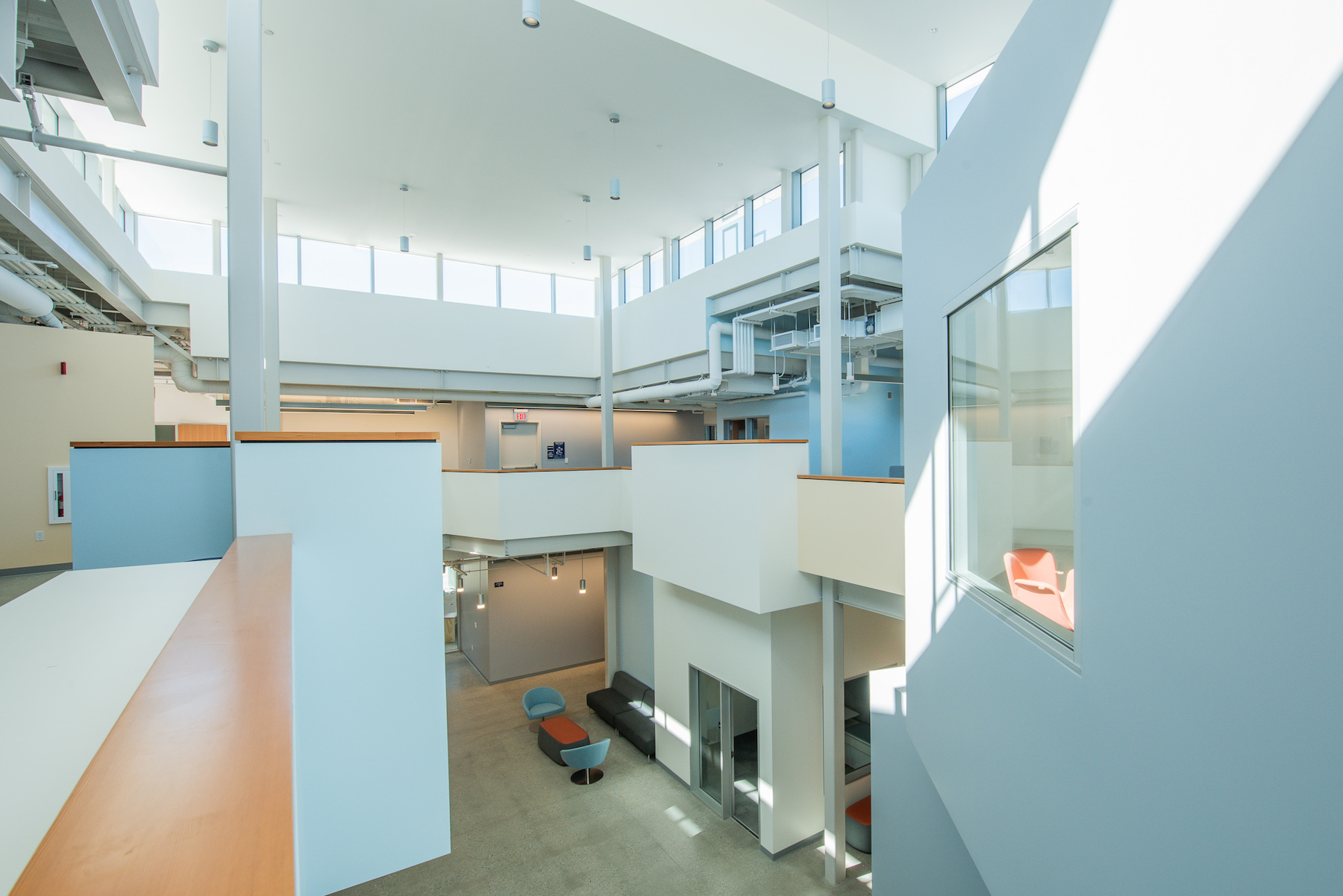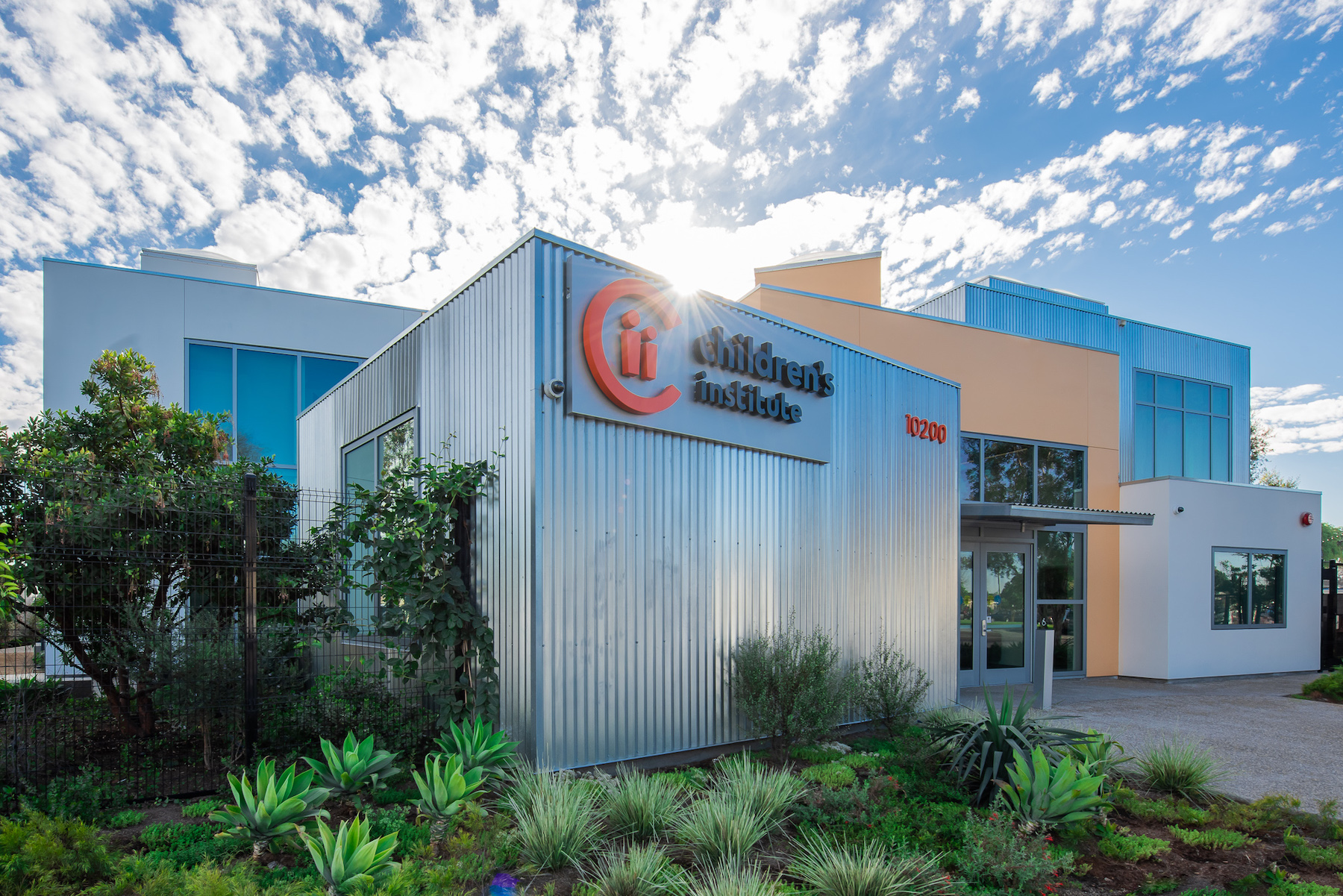The Children’s Institute (CII) in Los Angeles will open a 200,000-sf campus designed by Frank Gehry this summer. The new development will provide CII with its first purpose-built home in L.A.’s Watts neighborhood, and is designed to host programs and offer resources for this economically disadvantaged community.
CII has been a dedicated non-profit organization for 116 years, and has worked with the Watts Community since 2007. They have partnered with families, as well as other community organizations, to provide services like counseling and workshops. This campus at Success Avenue and East 102nd Street in South LA will centralize Children’s Institute’s operations in the area.
Gehry’s design aims to downplay the building’s mass, while showcasing the important community work happening inside. The facade is broken down to relate to the adjacent single-family residences using simple interlocking volumes made of plaster and corrugated metal cladding. The priority was to create a welcoming building, one that was scaled appropriately to the surrounding neighborhood and one that feels approachable.
The interior is full of natural light from the large windows and the many skylights throughout. Double-height public spaces are scaled to accommodate larger community gatherings, while office areas are open to the central atrium below on the second floor. A series of small group and individual therapy rooms are located off the atrium, each with large windows to fill the space with natural light.
Designed For the Community
The Watts campus was intentionally designed to make a connection between CII and the Watts community. The building operates both as a community center and a therapy center, and offers space for neighborhood meetings and events. The center will be home to a number of outreach programs that directly respond to the issues within the community, including the Watts Gang Task Force and the LAPD Community Safety Partnership. Programs include:
- Toddler socialization
- Individual and group counseling
- Youth development
- Parenting workshops
- Workforce development/employment support
- Project fatherhood sessions
“The new Watts campus is a beautiful symbol of Children’s Institute’s ongoing commitment to our city and this neighborhood in particular,” said Los Angeles Police Department Captain and Children’s Institute Trustee Emada Tingirides. “I know that my patrol officers that work in the community of Watts have a partner as we try to address some of the concerns, trauma and violence in the community. Children’s Institute continues to be an unwavering partner to Watts families year after year.”
The Children’s Institute has planned a Community Celebration on June 25 at the new Watts Campus to welcome families to enjoy a day of performances and activities.
Building Team:
Owner and developer: CII
Architect of Record: Chait & Company
Design architect: Gehry Partners, LLP
MEP engineer: Schnackel Engineers
Structural engineer: Workpoint Engineering
Landscape Architect: Elysian Landscapes
General contractor/construction manager: Oltmans Construction Co.


Related Stories
| Aug 11, 2010
Biograph Theater
Located in Chicago's Lincoln Park neighborhood, Victory Gardens Theater Company has welcomed up-and-coming playwrights for 33 years. In 2004, the company expanded its campus with the purchase of the Biograph Theater for its new main stage. Built in 1914, the theater was one of the city's oldest remaining neighborhood movie houses, and it was part of Chicago's gangster lore: in 1934, John Dillin...
| Aug 11, 2010
Top of the rock—Observation deck at Rockefeller Center
Opened in 1933, the observation deck at Rockefeller Center was designed to evoke the elegant promenades found on the period's luxury transatlantic liners—only with views of the city's skyline instead of the ocean. In 1986 this cultural landmark was closed to the public and sat unused for almost two decades.
| Aug 11, 2010
Putting the Metal to the Petal
The Holocaust and Human Rights Center of Maine was founded in 1985, but the organization didn't have a permanent home until May 2008. That's when the Michael Klahr Center, which houses the HHRC, opened on the Augusta campus of the University of Maine. The design, by Boston-based architects Shepley Bulfinch Richardson & Abbott, was selected from among more than 200 entries in a university-s...
| Aug 11, 2010
Jefferson Would Be Proud
The Virginia State Capitol Building—originally designed by Thomas Jefferson and almost as old as the nation itself—has proudly served as the oldest continuously used Capitol in the U.S. But more than two centuries of wear and tear put the historical landmark at the head of the line for restoration.
| Aug 11, 2010
Let There Be Daylight
The new public library in Champaign, Ill., is drawing 2,100 patrons a day, up from 1,600 in 2007. The 122,600-sf facility, which opened in January 2008, certainly benefits from amenities that the old 40,000-sf library didn't have—electronic check-in and check-out, new computers, an onsite coffeehouse.
| Aug 11, 2010
American Tobacco Project: Turning over a new leaf
As part of a major revitalization of downtown Durham, N.C., locally based Capitol Broadcasting Company decided to transform the American Tobacco Company's derelict 16-acre industrial plant, which symbolized the city for more than a century, into a lively and attractive mixed-use development. Although tearing down and rebuilding the property would have made more economic sense, the greater goal ...
| Aug 11, 2010
Bronze Award: Alumni Gymnasium Renovation, Dartmouth College Hanover, N.H.
At a time when institutions of higher learning are spending tens of millions of dollars erecting massive, cutting-edge recreation and fitness centers, Dartmouth College in Hanover, N.H., decided to take a more modest, historical approach. Instead of building an ultra-grand new facility, the university chose to breathe new life into its landmark Alumni Gymnasium by transforming the outdated 99-y...
| Aug 11, 2010
Fleet Library, Rhode Island School of Design
When tasked with transforming an early 1920s Italian Renaissance bank building into a fully functional library for the Rhode Island School of Design, the Building Team for RISD's Fleet Library found itself at odds with the project's two main goals. On the one hand, the team would have to carefully restore and preserve the historic charm and ornate architectural details of the landmark space, d...
| Aug 11, 2010
Gold Award: The Lion House, Bronx Zoo Bronx, N.Y.
Astor Court sits at the heart of the 265-acre Bronx Zoo, and its six Beaux Arts buildings were constructed at the turn of the 20th century to house exotic animals from around the world. When the Lion House was built in 1903, the brick and limestone facility was considered state-of-the-art, but as standards of animal care advanced, the lions were moved into a more natural setting, and the Lion H...
| Aug 11, 2010
The pride of Pasadena
As a shining symbol of civic pride in Los Angeles County, Pasadena City Hall stood as the stately centerpiece of Pasadena's Civic Center since 1927. To the casual observer, the rectangular edifice, designed by San Francisco Classicists John Bakewell, Jr., and Arthur Brown, Jr., appeared to be aging gracefully.







